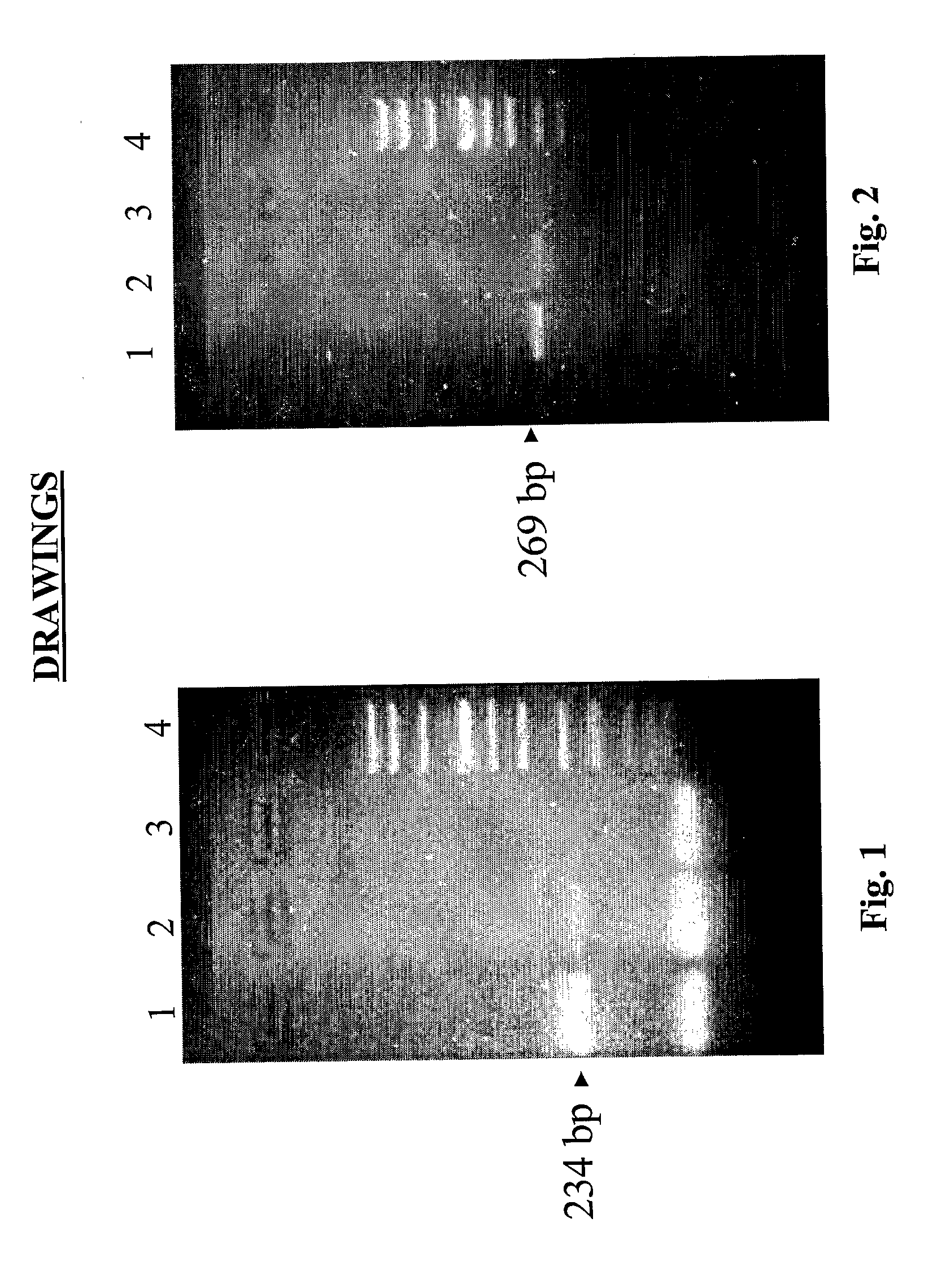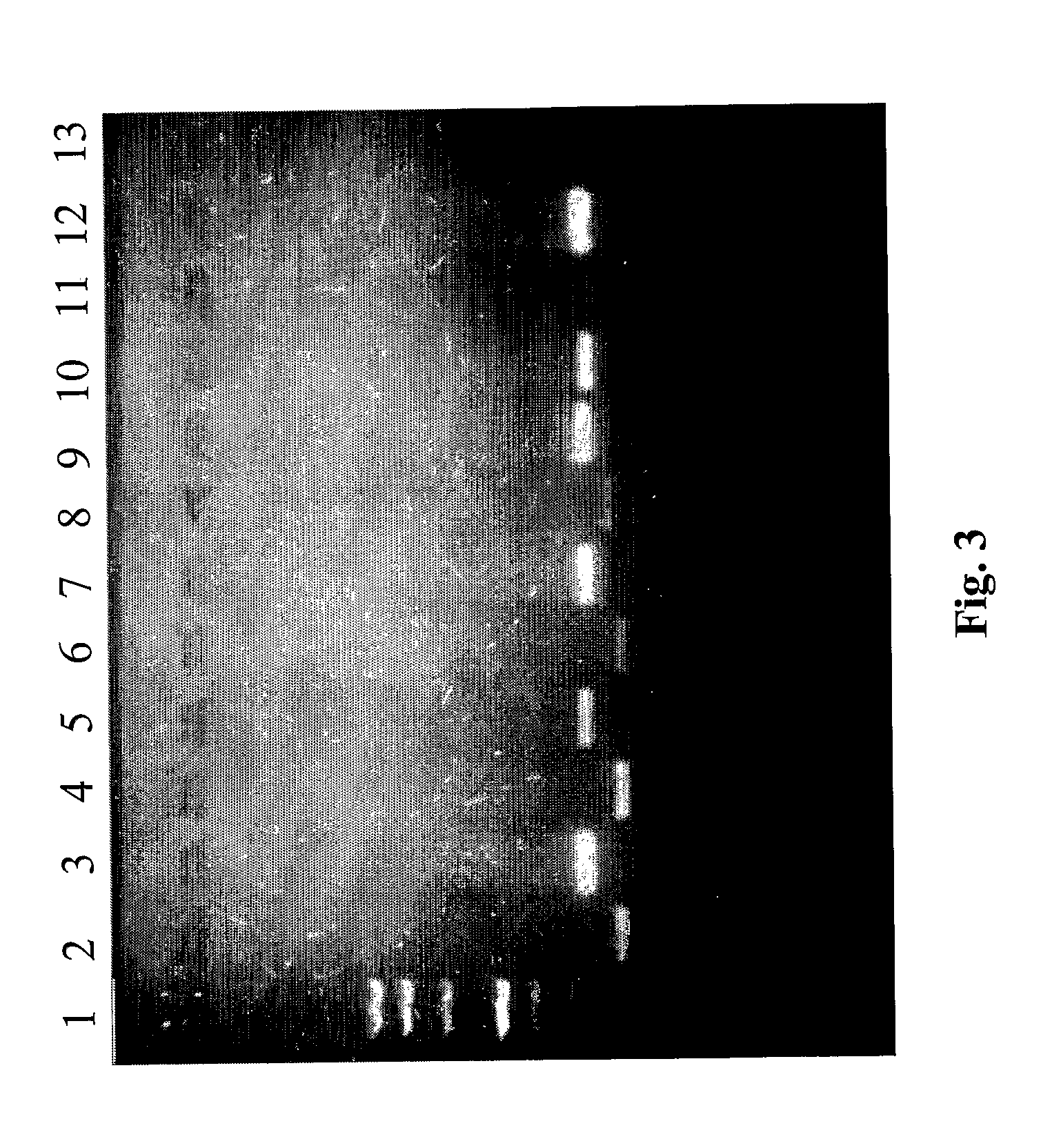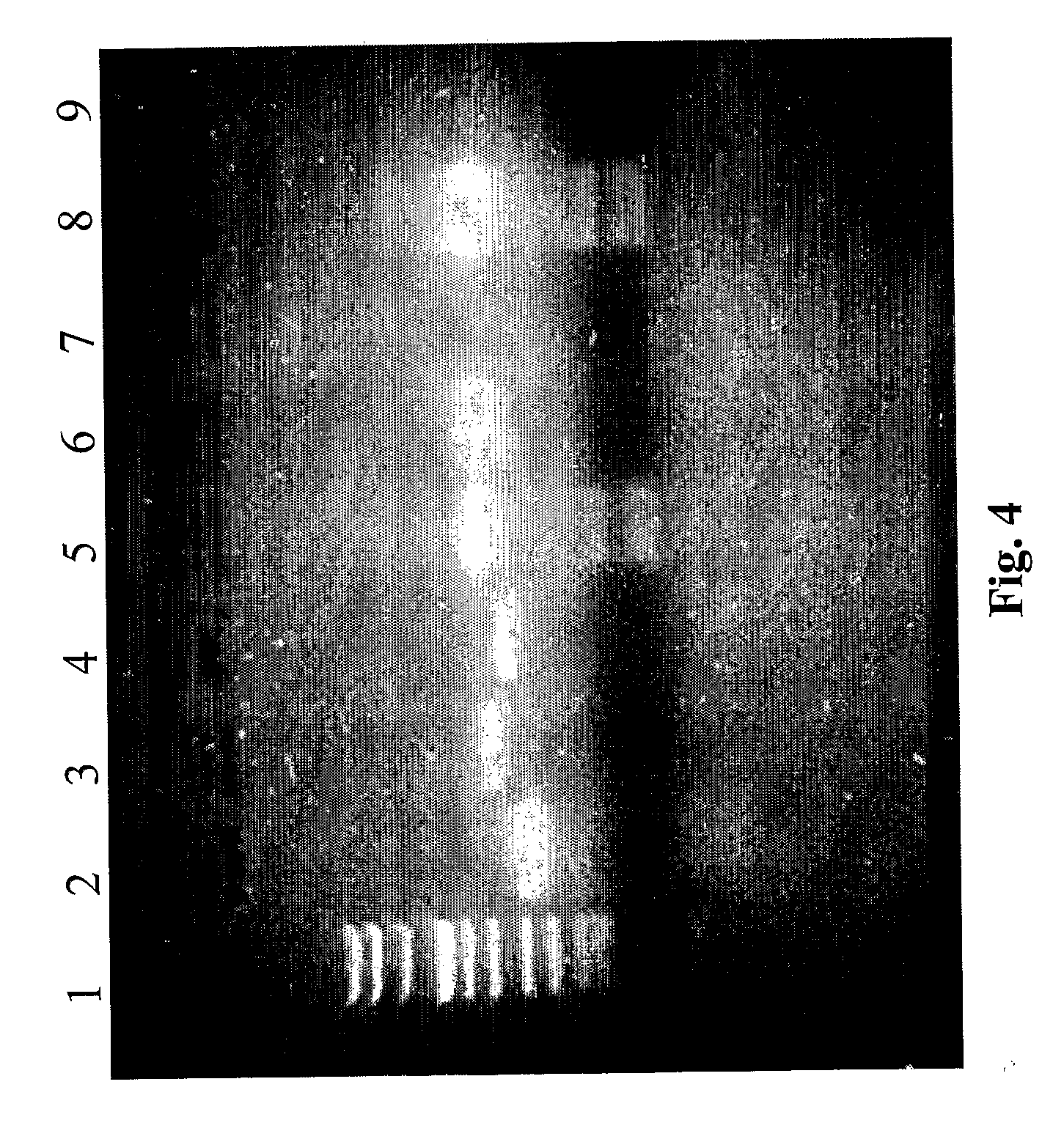Method for simultaneous extraction of nucleic acids from a biological sample
a biological sample and nucleic acid technology, applied in the field of biological methods, can solve the problems of difficult rna extraction, difficult to perform subsequent molecular reactions, and insufficient quantity of nucleic acids, and achieve good extraction yield
- Summary
- Abstract
- Description
- Claims
- Application Information
AI Technical Summary
Benefits of technology
Problems solved by technology
Method used
Image
Examples
example 2
DNA Extraction from the Organic Phase Obtained Following the Example 1
[0072] The tubes containing the organic phase stored at 4° C. (as obtained following RNA extraction as described in the example 1) were processed for DNA extraction. The aqueous phase was completely removed and the DNA precipitated from the organic phase by adding 1 μl of glycogen, 200 μl of absolute ethanol mixed by inversion for 2-3 min at room temperature and then centrifuged at 12000 rpm at 4° C. for 5 min, settling the supernatant.
[0073] The eventual presence of phenol was removed by adding 0.1 M of citrate Na in 10% ethanol (100 μl in 100 of lysing solution). After incubation for 30 min at room temperature the sample was centrifuged at 12000 rpm at 4° C. for 5 min and the supernatant then settled.
[0074] Washing with citrate Na was repeated twice and finally the pellet was washed with 200 μl of 75% ethanol (for 100 μl of lysing solution). The two pellets obtained were dried and resuspended in sterile water...
example 3
PCR of Nucleic Acids Extracted Using the New Method
[0077] For evaluation of the quality of the extracted nucleic acids, PCR for house-keeping genes was performed; β-globin and glyceraldehydes-3-phosphate dehydrogenase (3GPDH) for DNA and RNA, respectively. The primers (maximum 21 base pairs) used for PCR were purified in HPLC (Amersham Pharmacia Biotech).
[0078] PCR and retro-transcription specifics are reported in Tables 2,3 and 4. The PCR products were visualised on an NU-SIEVE 3:1 gel and UV photographed.
[0079] Successful amplification for β-globin was obtained in all frozen and fixed samples. Enteroviral and adenoviral genomes were also investigated in nucleic acid extracted from diagnostic samples (15 samples: 10 biopsies and 5 autoptic fragments).
[0080] All the specifics of the primers including the number of base pair and annealing temperature are reported in Table 1.
TABLE 1Nucleotides used for PCRAnnealingTypeAmpliconTemperatureG3PDH#234 bp50° C.βglobina*269 bp44° C.Ent...
example 4
Comparison Between the Quantity of Nucleic Acid Extracted Following the New Method and that Obtained Using Well Known Methods
[0105] In each sample the nucleic acids were analyzed both by spectrophotometry and by PCR for house-keeping genes (see previous example).
[0106] In particular DNA was extracted from frozen tissue following the method (lysing solution: EDTA,TRIS-HCL and proteinase K) reported by Sambrock and Maniatis, CSH 1988 (Blin and Stafford, Nucleic Acids Res., 1973; 3:2303). RNA was extracted from frozen tissue using Chomczynski and Sacchi (Chomczynski P and Sacchi N., Anal. Biochem; 1987; 162:156-159): the name of the commercial kit is RNAzol. The Omnizol kit (able to extract both nucleic acids) was also used in frozen tissue.
[0107] In the following tables the value of nucleic acids obtained with the new method in comparison with the other protocols are reported (memo: the weight of fragments was from 10 to 20 mg and for biopsy from 1 to 9 mg). In all cases all the co...
PUM
| Property | Measurement | Unit |
|---|---|---|
| concentration | aaaaa | aaaaa |
| concentration | aaaaa | aaaaa |
| temperature | aaaaa | aaaaa |
Abstract
Description
Claims
Application Information
 Login to View More
Login to View More - Generate Ideas
- Intellectual Property
- Life Sciences
- Materials
- Tech Scout
- Unparalleled Data Quality
- Higher Quality Content
- 60% Fewer Hallucinations
Browse by: Latest US Patents, China's latest patents, Technical Efficacy Thesaurus, Application Domain, Technology Topic, Popular Technical Reports.
© 2025 PatSnap. All rights reserved.Legal|Privacy policy|Modern Slavery Act Transparency Statement|Sitemap|About US| Contact US: help@patsnap.com



